The Nuremberg Trial defendants
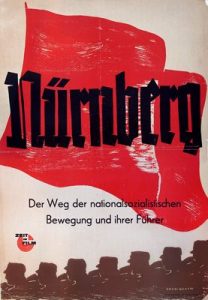 On Sunday, May 16, the Fort Myers Film Festival will screen Nuremberg: Its Lesson for Today. Made between 1946 and 1948, the documentary chronicles the 11-month-long Nuremberg trial that ended October 1, 1946.
On Sunday, May 16, the Fort Myers Film Festival will screen Nuremberg: Its Lesson for Today. Made between 1946 and 1948, the documentary chronicles the 11-month-long Nuremberg trial that ended October 1, 1946.
Memories fade with the passage of time, so it is worthwhile recalling who the defendants were and why they were on trial. Hitler, Joseph Goebbels and Heinrich Himmler were not among those under indictment. They had committed suicide in the waning days of World War II. But more than 20 high-level Nazi officials sat in the Nuremberg courtroom. These were the most notorious of the defendants:
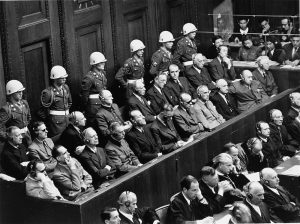 Hermann Goering
Hermann Goering- Ernst Kaltenbrunner
- Alfred Rosenberg
- Joachim Von Ribbentrop
- Hans Frank
- Rudolf Hess
- Albert Speer
Goering was Hitler’s second in command. He held numerous 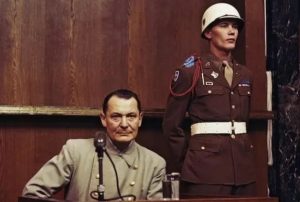 titles. In addition to Reichsmarschall, he was Commander of the Luftwaffe, Prime Minister of Prussia, Speaker of the German Parliament and Director of the Reich’s Four-Year Plan. He was accused of many crimes, but none more heinous than ordering SD head Reinhard Heydrich on July 3, 1941 to make “all necessary organizational, practical and financial preparations for bringing about
titles. In addition to Reichsmarschall, he was Commander of the Luftwaffe, Prime Minister of Prussia, Speaker of the German Parliament and Director of the Reich’s Four-Year Plan. He was accused of many crimes, but none more heinous than ordering SD head Reinhard Heydrich on July 3, 1941 to make “all necessary organizational, practical and financial preparations for bringing about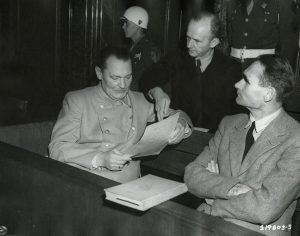 the final solution of the Jewish problem in the territories within the German sphere of influence in Europe.” While words like “kill,” “annihilate” and “eradicate” were never used in Goering’s three-paragraph memo, it was clear to Heydrich, Adolf Eichmann and the fifteen state secretaries who gathered in Wannsee on Tuesday, January 20, 1942 that Goering had ordered the extermination of some 11 million
the final solution of the Jewish problem in the territories within the German sphere of influence in Europe.” While words like “kill,” “annihilate” and “eradicate” were never used in Goering’s three-paragraph memo, it was clear to Heydrich, Adolf Eichmann and the fifteen state secretaries who gathered in Wannsee on Tuesday, January 20, 1942 that Goering had ordered the extermination of some 11 million 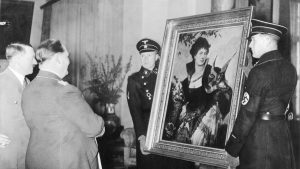 European Jews.
European Jews.
Goering was also the principal architect of the greatest theft of cultural assets history has ever witnessed. This is the saga of roughly 220,000 works of art and millions of artifacts and cultural assets. Over the course of the war, Goering set about amassing the 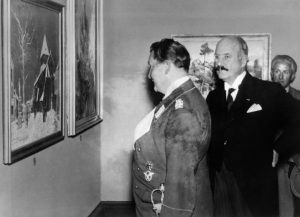 most prestigious private art collection in the world at his hunting lodge, Carinhall, outside Berlin. He did not enjoy the unfettered ability to take whatever he wanted. That’s because Hitler intended to establish a great cultural center and art museum in his hometown of Linz, Austria and asserted a right of first refusal over all of the art and cultural assets the Wehrmacht and other
most prestigious private art collection in the world at his hunting lodge, Carinhall, outside Berlin. He did not enjoy the unfettered ability to take whatever he wanted. That’s because Hitler intended to establish a great cultural center and art museum in his hometown of Linz, Austria and asserted a right of first refusal over all of the art and cultural assets the Wehrmacht and other 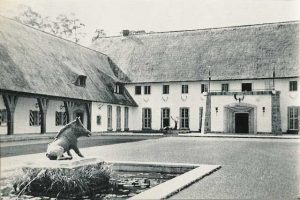 Nazi agencies seized. But the Reichsmarschall was, in the words of the OSS Art Looting Team that interrogated him at Nuremberg, “cruel, grasping, deceitful and hypocritical.” He co-opted the machinery that Hitler and Alfred Rosenberg, his Representative for the Supervision of the Intellectual and Ideological Instruction of the National Socialist Party,
Nazi agencies seized. But the Reichsmarschall was, in the words of the OSS Art Looting Team that interrogated him at Nuremberg, “cruel, grasping, deceitful and hypocritical.” He co-opted the machinery that Hitler and Alfred Rosenberg, his Representative for the Supervision of the Intellectual and Ideological Instruction of the National Socialist Party, 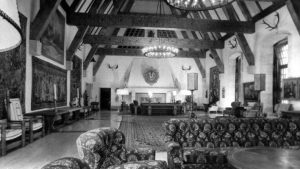 created in order to loot galleries and private collections throughout Europe. It was bad enough that he appropriated tens of thousands of priceless paintings for himself. But he only liked old masters and works rendered by 18th and 19th century German artists. To get what he coveted, Goering confiscated and traded modernist (the Nazis
created in order to loot galleries and private collections throughout Europe. It was bad enough that he appropriated tens of thousands of priceless paintings for himself. But he only liked old masters and works rendered by 18th and 19th century German artists. To get what he coveted, Goering confiscated and traded modernist (the Nazis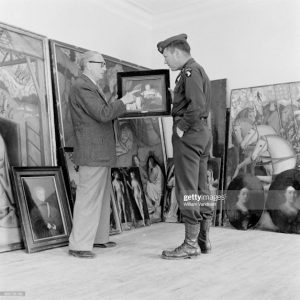 called them “degenerate”) works from Jewish art patrons such as the Rothschilds, Georges Wildenstein, Paul Rosenberg and David David-Weill. As a consequence, numerous works by Impressionist and Expressionist masters like Renoir, Manet, Toulouse-Lautrec, Cezanne and van Gogh disappeared and have seemingly been lost to posterity forever. All totaled, more than 100,000 paintings alone are either still missing or the subject of dispute.
called them “degenerate”) works from Jewish art patrons such as the Rothschilds, Georges Wildenstein, Paul Rosenberg and David David-Weill. As a consequence, numerous works by Impressionist and Expressionist masters like Renoir, Manet, Toulouse-Lautrec, Cezanne and van Gogh disappeared and have seemingly been lost to posterity forever. All totaled, more than 100,000 paintings alone are either still missing or the subject of dispute.
Although Goering may have issued his memo on the final solution to 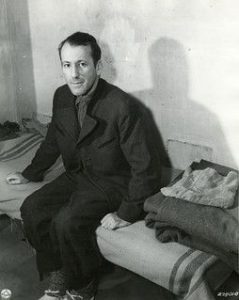 Reinhard Heydrich, it fell onto 6’11” Ernst Kaltenbrunner to actually set up the machinery for arresting, interring and executing Europe’s Jews. That’s because Kaltenbrunner took over as head of the Gestapo and the Nazi’s concentration camp system after Heydrich was assassinated by two Czechoslovakian commandos outside Prague on May 27, 1942. He discharged his duties with the fervor of a zealot.
Reinhard Heydrich, it fell onto 6’11” Ernst Kaltenbrunner to actually set up the machinery for arresting, interring and executing Europe’s Jews. That’s because Kaltenbrunner took over as head of the Gestapo and the Nazi’s concentration camp system after Heydrich was assassinated by two Czechoslovakian commandos outside Prague on May 27, 1942. He discharged his duties with the fervor of a zealot.
As mentioned, Alfred Rosenberg was the Nazi Party leader who created the machinery for looting the cultural heritage of the nations the Nazis subjugated beginning in 1938. The art looting organization went by the name Einstazstab Reichsleiter Rosenberg Fur 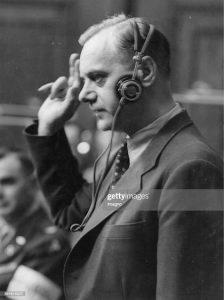 Die Besetzeten Gebiete or ERR for short. The ERR became inextricably involved in plundering art from Jewish galleries, dealers, collectors and private citizens. But as Goering subverted more and more of the ERR’s operations to advance his own ends, Rosenberg turned his energies to a new program under which the ERR raided 71,619 dwellings formerly owned or occupied by Jewish families and shipped more than 1 million cubic meters of household good in 29,436 railroad cars to the victims of Allied bombings in Germany.
Die Besetzeten Gebiete or ERR for short. The ERR became inextricably involved in plundering art from Jewish galleries, dealers, collectors and private citizens. But as Goering subverted more and more of the ERR’s operations to advance his own ends, Rosenberg turned his energies to a new program under which the ERR raided 71,619 dwellings formerly owned or occupied by Jewish families and shipped more than 1 million cubic meters of household good in 29,436 railroad cars to the victims of Allied bombings in Germany.
Joachim von Ribbentrop was the German Minister of Foreign Affairs. He played a key role in negotiating the German-Soviet nonaggression pact that 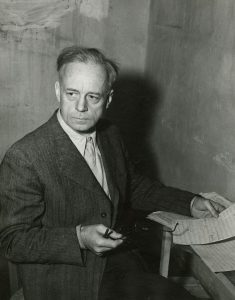 made Germany’s invasion of Poland possible in September of 1939. He also played a significant role in the Holocaust, persuading Italy and various Axis satellites to hasten their deportation of Jews to the extermination camps in the East. Von Ribbentrop also participated in art looting. One of the paintings he confiscated from a Jewish collector by the name of Paul Rosenberg was an important work by Utrillo titled Rue de Sannois. It has never been found.
made Germany’s invasion of Poland possible in September of 1939. He also played a significant role in the Holocaust, persuading Italy and various Axis satellites to hasten their deportation of Jews to the extermination camps in the East. Von Ribbentrop also participated in art looting. One of the paintings he confiscated from a Jewish collector by the name of Paul Rosenberg was an important work by Utrillo titled Rue de Sannois. It has never been found.
Hans Frank was Hitler’s lawyer before the war. After Poland fell, Hitler appointed him as the Governor of the occupied country. In that capacity, he played a significant role in the murder of much of Poland’s Jewish 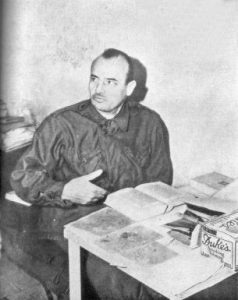 population. Like Goring, Rosenberg and von Ribbentrop, Frank also participated in looting art. While he was presumptively supervising the appropriation of Poland’s art treasures for Hitler, he spirited three important paintings, Leonardo da Vinci’s Lady with the Ermine, Rembrandt’s Landscape with the Good Samaritan and Raphael’s Portrait of a Gentleman, to his private residence in Southern Bavaria. When American forces arrived in May of 1945, they found the da Vinci and the Rembrandt, but the Raphael was gone and has never been found.
population. Like Goring, Rosenberg and von Ribbentrop, Frank also participated in looting art. While he was presumptively supervising the appropriation of Poland’s art treasures for Hitler, he spirited three important paintings, Leonardo da Vinci’s Lady with the Ermine, Rembrandt’s Landscape with the Good Samaritan and Raphael’s Portrait of a Gentleman, to his private residence in Southern Bavaria. When American forces arrived in May of 1945, they found the da Vinci and the Rembrandt, but the Raphael was gone and has never been found.
Rudolf Hess was Hitler’s Deputy Führer until he flew to Scotland in 1941 in 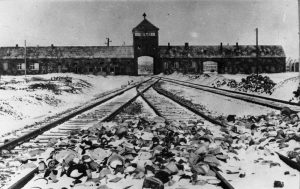 attempt to broker peace with Great Britain.
attempt to broker peace with Great Britain.
Albert Speer was Hitler’s favorite architect and close friend, and Minister of Armaments from 1942. In this capacity, he was ultimately responsible for the use of slave laborers from the occupied territories in armaments production.
Of 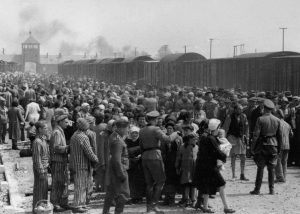 the 23 men tried at Nuremberg, three were acquitted. Speer was sentenced to twenty years in prison as was Baldur von Schirach. Hess was sentenced to life and committed to Spandau Prison, where he died in 1987. Hitler’s Minister of Finance, Walther Funk, was also sentenced to life in prison (although he was released in May of 1957 due to ill health and died three years later). Two other defendants received lesser
the 23 men tried at Nuremberg, three were acquitted. Speer was sentenced to twenty years in prison as was Baldur von Schirach. Hess was sentenced to life and committed to Spandau Prison, where he died in 1987. Hitler’s Minister of Finance, Walther Funk, was also sentenced to life in prison (although he was released in May of 1957 due to ill health and died three years later). Two other defendants received lesser 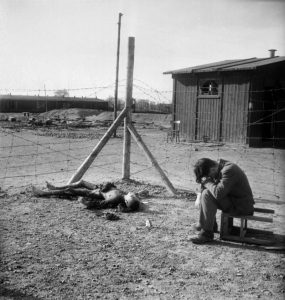 sentences, 15 years for Baron Konstantin von Neurath and 10 for Karl Donitz. All the rest were sentenced to death and hanged.
sentences, 15 years for Baron Konstantin von Neurath and 10 for Karl Donitz. All the rest were sentenced to death and hanged.
Except for Goering.
Goering demanded to be executed by firing squad (“with dignity”) rather than hanged like a common criminal. His request was denied. But the denial was not the Reichsmarchall’s harshest blow.
While he was awaiting trial, Monuments Man Stewart Leonard informed Goering that his prized Vermeer, 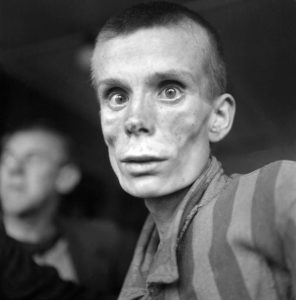 Christ with the Woman Taken in Adultery, for which he had traded 150 paintings, was a Han van Meegeren forgery. “[H]e ‘looked as if for the first time he had discovered there was evil in the world,’” related Leonard afterwards. “The Reichsmarschall had fancied himself a Renaissance man; in the end, he was revealed to be nothing more than an unsophisticated and greedy fool,” writes Robert M. Edsel in The Monuments Men (p.403).
Christ with the Woman Taken in Adultery, for which he had traded 150 paintings, was a Han van Meegeren forgery. “[H]e ‘looked as if for the first time he had discovered there was evil in the world,’” related Leonard afterwards. “The Reichsmarschall had fancied himself a Renaissance man; in the end, he was revealed to be nothing more than an unsophisticated and greedy fool,” writes Robert M. Edsel in The Monuments Men (p.403).
The night before the 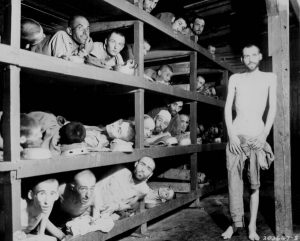 defendants were to be hanged, Goering committed suicide with a potassium cyanide capsule that had somehow been smuggled into his cell
defendants were to be hanged, Goering committed suicide with a potassium cyanide capsule that had somehow been smuggled into his cell
And then there was Hitler’s Deputy and Nazi Party Secretary, Martin Bormann.
Bormann was thought to still be at large when the Nuremberg trial started, so he was tried in absentia and 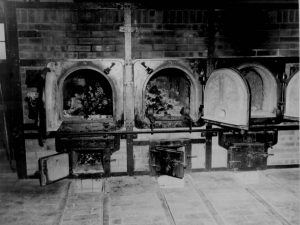 sentenced to be hanged. For decades, he was sought by Nazi hunters including Simon Wiesenthal and Zvi Aharoni, along with Adolf Eichmann, Josef Mengele and Heinrich Muller. But DNA testing conducted in 1998 on human remains found in Berlin in 1972 showed that Bormann had committed suicide by taking cyanide on the night of May 2/3 of 1945, a conclusion that Wiesenthal also reached in the 16-page chapter in his 1988 memoir
sentenced to be hanged. For decades, he was sought by Nazi hunters including Simon Wiesenthal and Zvi Aharoni, along with Adolf Eichmann, Josef Mengele and Heinrich Muller. But DNA testing conducted in 1998 on human remains found in Berlin in 1972 showed that Bormann had committed suicide by taking cyanide on the night of May 2/3 of 1945, a conclusion that Wiesenthal also reached in the 16-page chapter in his 1988 memoir 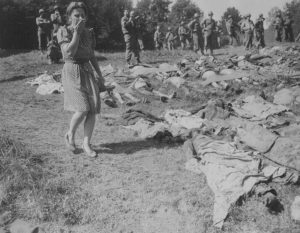 titled “Declared Dead.”
titled “Declared Dead.”
In Nuremberg: The Lesson for Today, you will not only see these vile and despicable Nazis, but hear them speak on their own behalf.
“The Nuremberg trial represented a historic initiative to redeem Western civilization from the horror and degradation of the Holocaust, all the more remarkable because hatred and revenge were uppermost in the minds of 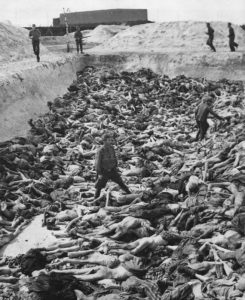 most survivors of the carnage,” states Schulberg Productions on its website regarding the film. “It came about only because the Americans, with the benefit of slightly more remove than their European allies, argued vociferously for a proper, carefully-conducted trial as opposed to summary executions. In so doing, they ultimately helped heal the devastating divisions of war and seal the peace.”
most survivors of the carnage,” states Schulberg Productions on its website regarding the film. “It came about only because the Americans, with the benefit of slightly more remove than their European allies, argued vociferously for a proper, carefully-conducted trial as opposed to summary executions. In so doing, they ultimately helped heal the devastating divisions of war and seal the peace.”
But the film’s broader lesson is the irrefutable evidence is presents demonstrating that Adolf Hitler had in fact sought the genocide of 11 million European Jews. This is a critical message given the rise of hate crimes directed against Jews and other marginalized segments of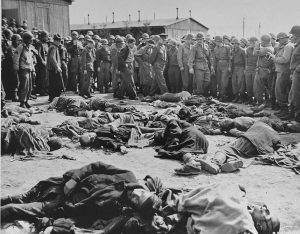 the population and the tenacity of Holocaust deniers.
the population and the tenacity of Holocaust deniers.
“The Holocaust shows that when one group is targeted, all people are vulnerable,” states the United States Holocaust Memorial Museum.
“Comprehension and memory of the past are crucial to how we understand ourselves, our society, and our goals for the future. Intentionally denying 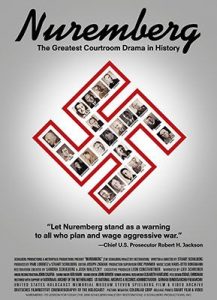 or distorting the historical record threatens communal understanding of how to safeguard democracy and individual rights.”
or distorting the historical record threatens communal understanding of how to safeguard democracy and individual rights.”
These views perpetuate long-standing antisemitic stereotypes, the very beliefs that helped lay the groundwork for the Holocaust. Nuremberg: The Lesson for Today comes at a time when these beliefs are once again on the rise.
April 7, 2021.














 Tom Hall is both an amateur artist and aspiring novelist who writes art quest thrillers. He is in the final stages of completing his debut novel titled "Art Detective," a story that fictionalizes the discovery of the fabled billion-dollar Impressionist collection of Parisian art dealer Josse Bernheim-Jeune, thought by many to have perished during World War II when the collection's hiding place, Castle de Rastignac in southern France, was destroyed by the Wehrmacht in reprisal for attacks made by members of the Resistance operating in the area. A former tax attorney, Tom holds a bachelor's degree as well as both a juris doctorate and masters of laws in taxation from the University of Florida. Tom lives in Estero, Florida with his fiancee, Connie, and their four cats.
Tom Hall is both an amateur artist and aspiring novelist who writes art quest thrillers. He is in the final stages of completing his debut novel titled "Art Detective," a story that fictionalizes the discovery of the fabled billion-dollar Impressionist collection of Parisian art dealer Josse Bernheim-Jeune, thought by many to have perished during World War II when the collection's hiding place, Castle de Rastignac in southern France, was destroyed by the Wehrmacht in reprisal for attacks made by members of the Resistance operating in the area. A former tax attorney, Tom holds a bachelor's degree as well as both a juris doctorate and masters of laws in taxation from the University of Florida. Tom lives in Estero, Florida with his fiancee, Connie, and their four cats.